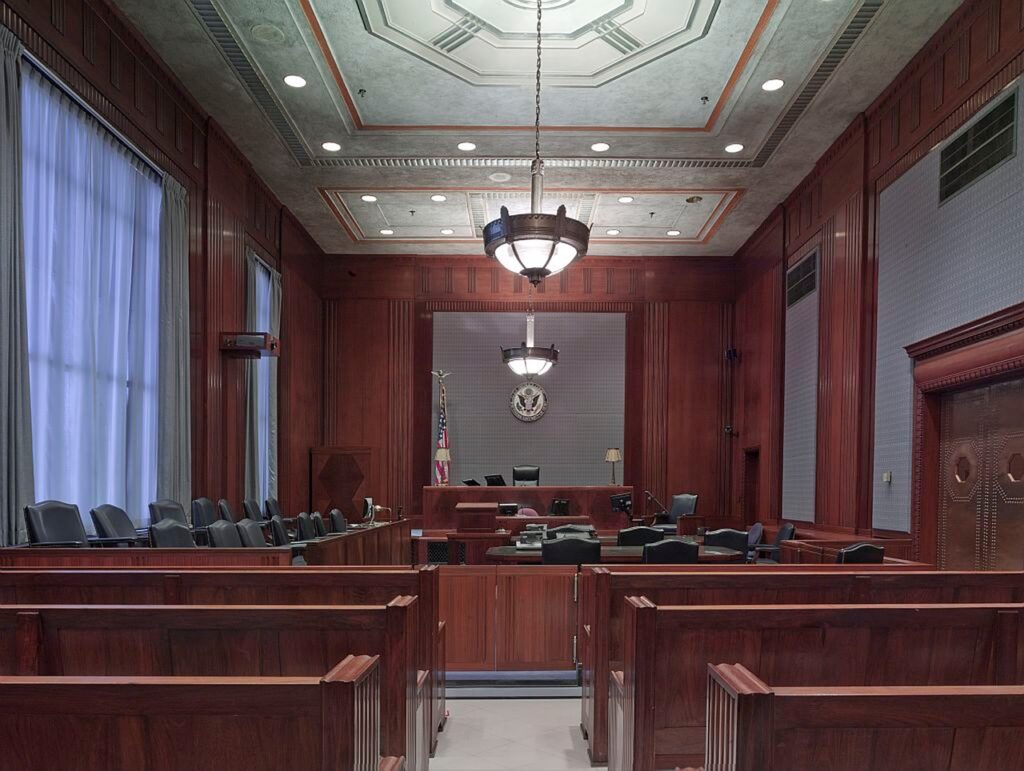
(Scypre.com) – Jurors in the trial of Daniel Penny resumed deliberations for a fourth day on Friday, struggling to reach a unanimous decision on the top charge of manslaughter in the second degree. Penny, a 26-year-old former Marine and architecture student, stands accused of causing the death of Jordan Neely, a 30-year-old homeless man with a history of mental illness, during a confrontation on a Manhattan subway car.
The jury deliberated for only about an hour before informing Judge Maxwell Wiley that they were unable to agree on the manslaughter charge. “We the jury request instructions from Judge Wiley. At this time, we are unable to come to a unanimous vote on count 1 – manslaughter in the second degree,” the jury’s note read.
🚨 #BREAKING: After 3 days of deliberations, Daniel Penny jurors have informed the judge they are DEADLOCKED on the second degree manslaughter charge
— Nick Sortor (@nicksortor) December 6, 2024
They will most likely be forced by the judge to continue deliberating.
FREE DANIEL PENNY!
pic.twitter.com/7v6hHxmac0
The manslaughter charge requires the prosecution to prove that Penny acted recklessly when he placed Neely in a chokehold during a heated altercation on the subway. Witnesses testified that Neely, who was reportedly under the influence of synthetic marijuana, barged onto the train shouting threats to kill passengers. “In this case, I think that they can’t move on to count 2 unless they find the defendant not guilty of count 1,” Judge Wiley explained to attorneys, referencing the legal procedure that prevents jurors from addressing a lesser charge until they resolve the greater one.
The second charge, criminally negligent homicide, carries a maximum penalty of four years in prison. The deadlock prompted Wiley to consider delivering an “Allen charge,” a specific set of instructions aimed at encouraging jurors to reach a consensus. These instructions, originating from the 1896 Supreme Court decision Allen v. United States, are controversial for potentially pressuring jurors to compromise their views under peer influence.
A Divided Jury and Legal Implications
The defense requested a mistrial, but Judge Wiley denied the motion, opting instead to give the jury additional time to deliberate. He reminded jurors of their responsibility to reach a unanimous verdict and acknowledged the difficulty of the case. “You’ve been a very good jury, and there’s no reason to think that any other jury in a future trial will be any more intelligent or fair than you are,” he said. He urged them to approach the facts with a “fresh slate” but emphasized that their decisions should align with their conscience.
Around noon, the jury returned to deliberations and later sought clarification on the legal definition of a “reasonable” person—a critical standard in determining whether Penny’s actions were justifiable or criminally reckless. Steven Raiser, one of Penny’s attorneys, commented on the development. “The jury is being very deliberate and has asked about the reasonable person standard,” he said. “This reflects on the justification charge. If the jury finds the Government failed to disprove justification, the charges, including the top count, will be dismissed.”
The Broader Context of the Case
Neely’s death occurred in a tense climate for New York City subway riders, marked by a surge in violent incidents. According to trial testimony, Neely’s erratic behavior and threats of violence deeply alarmed passengers. Witnesses described him as shouting that someone was going to “die today” and expressing indifference about spending his life in prison. Penny intervened by placing Neely in a chokehold to subdue him, a move that ultimately resulted in Neely’s death.
Neely had a history of arrests, including a 2021 assault on an elderly woman, and was reportedly under the influence of K2, a synthetic drug. At the time of the incident, he had an active arrest warrant. Penny remained at the scene, spoke with responding officers, and voluntarily met with detectives at a precinct.
The incident reignited debates over public safety and mental health care in the city’s transit system. Witnesses testified that Neely’s behavior was terrifying. “He was talking gibberish … but these guys are pushing people in front of trains and stuff,” Penny told investigators, referencing the broader fears of subway riders.
A Divisive Case
The case has drawn significant public attention and debate. Some argue that Penny acted out of necessity to protect himself and others on the train, while others contend his actions were excessive and reckless. Paul Mauro, a former NYPD inspector, criticized the district attorney’s decision to bring charges against Penny. “A deadlocked jury on the top charge is not a victory for the defendant in a case that should never have been brought to begin with,” Mauro said. “Daniel Penny is a young man spending thousands on attorneys, facing a civil case, and the possibility of a retrial. His liberty remains at risk. This is not justice.”
If convicted of the top charge, Penny faces up to 15 years in prison. For now, the jury’s inability to agree leaves his fate uncertain, with the potential for a retrial looming. As the jury continues to deliberate, the case remains a flashpoint for discussions about public safety, mental health, and the limits of self-defense.